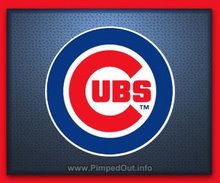One of the most recognizable things about Wrigley Field has always been the ivy covered outfield walls. However, since the departure of Kessinger and Beckert, one of the other most consistent facets of the park has been the long infield grass.
I contend it's time to cut the infield grass down to the nub.
If the Cubs are going to war with little Ceasar at SS, why not make the most of his glove. Izturis's offense will be mediocre at best, so let's capitalize on the strength of his slick fielding, while at the same time punish the opposition's less than gold glove fielding infielders.
The high infield grass will only help the poorer fielding teams. So a faster infield will become a plus to a Cubs infield that features two Gold Gloves and an upgraded second baseman.
Also the league average for the top eighty starters in ground ball to fly ball percentage was 1.42. The projected Cubs rotation of Zambrano, Hill, Lilly, Marquis and Miller, historic numbers average 1.26. Hence, the Cubs starters will be yielding a higher number of fly balls compared to the league average and a slow infield would only benefit the opposing team's defense.
Even with the Cubs starters averaging less ground balls than the league average, they will still induce 26% more ground balls than fly balls.
On the contrary, if the Cubs hitters face even a league average rotation, they will hit a higher percentage of ground balls than their competition, so the faster infield, the better.
All this talk of the height of the infield grass may seem trivial, but with a projected superior defensive infield and increased team speed, it wouldn't hurt for a few more seeing eye grounders to make their way through the infield.
Subscribe to:
Post Comments (Atom)



No comments:
Post a Comment